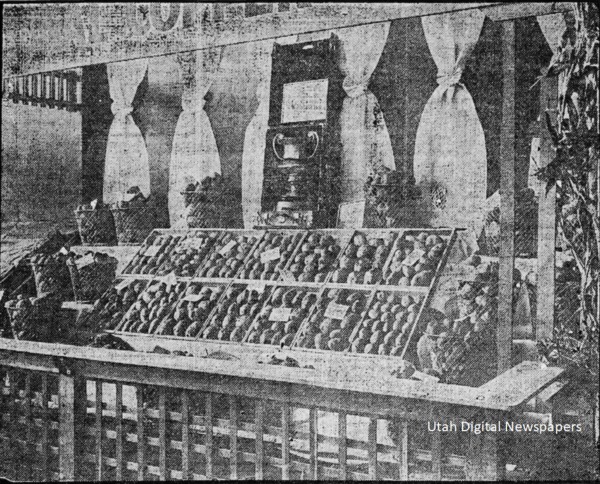Dublin Core
Title
Description
Agricultural work is critical to rural Utah’s history. But, it wasn’t until Utah State Agricultural College -- known as USAC -- was established in 1888 that young people had access to a formal education in farming. Getting students interested in husbandry required a little creativity, but Professor James C. Hogensen was up for the challenge. The answer? Potato growing clubs!
When Hogensen joined the faculty of USAC in 1907, the college was focused primarily on providing future farmers with college-level education. But, in 1912, he was assigned to an outreach program aimed at promoting agricultural and home science education. Working with local school officials, Hogensen visited 58 schools and talked with nearly 7,000 boys. His enthusiasm was contagious. Boys Potato Growing Clubs sprouted up in counties throughout the state, with roughly 600 members in Cache County and 300 in Box Elder County. Boys also joined programs in Utah and Sanpete Counties, marking the beginning of Utah's 4-H youth clubs.
Goals for the boys in Utah’s potato growing clubs were ambitious. Each participant pledged to grow “a half acre of potatoes” and members were expected to keep meticulous records of their crops. Students were encouraged to compete for local prizes at county fairs or even enter the annual state fair. Young farmers were judged on their yields, best 50 pounds, and best tubers. Of course, points were deducted for small and unsightly potatoes. Each entry was accompanied by a written paper detailing how their crop had been grown. In 1913, Cache County resident and Potato Club member, 16-year-old Merle Gilbert Hyer won first place -- and $100! -- at the Utah State Fair.
Within just a few years, agricultural clubs expanded beyond potato growing. Under the Extension Division of USAC, clubs expanded to corn, apples, poultry, sugar beets, as well as homemaking activities such as flower gardening and sewing that focused on girls. Club work encouraged education and excitement around agriculture and home economics. The program made meaningful changes to methods of farming, seed selection, crop variety, and record-keeping of crops.
Today, 4-H clubs have expanded beyond growing potatoes, but they continue to empower young learners through hands-on learning opportunities.
Creator
Source
_______________
See Miriam B. Murphy, “Boys’ Potato Growing Clubs,” History Blazer, May 1996; “History of 4-H,” National 4-H History Preservation Program; Daniel A. John, “Utah 4-H, a Dynamic Youth Program,” Utah Historical Quarterly, vol. 51 (1), Winter 1983; F. Ross Peterson, “Utah State University,” Utah History Encyclopedia.

